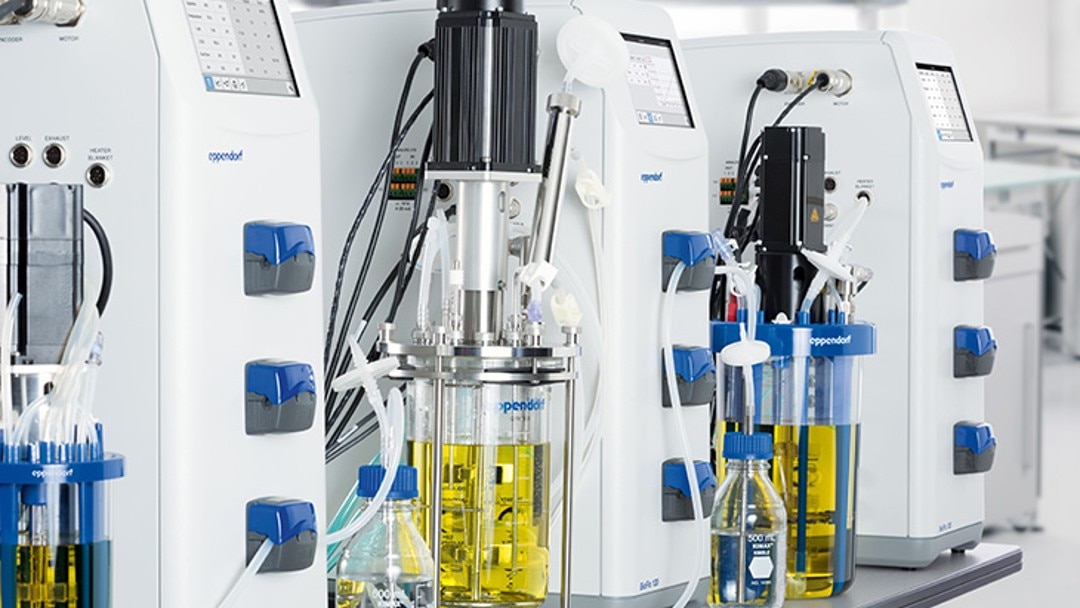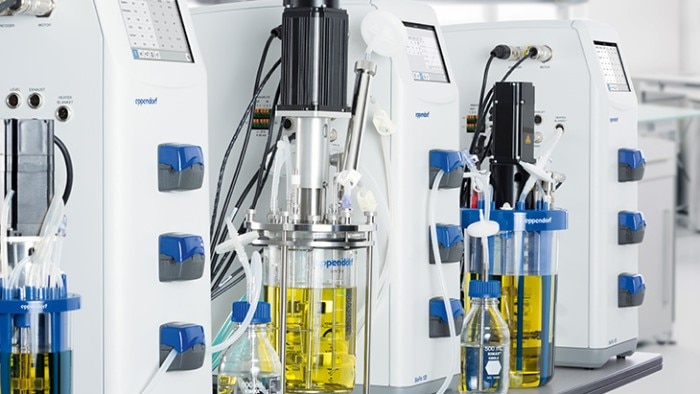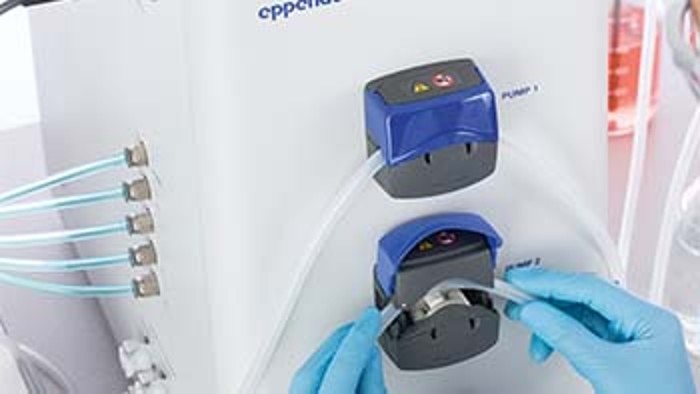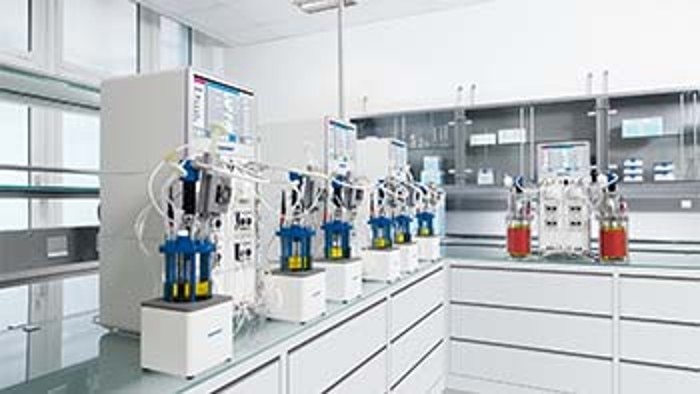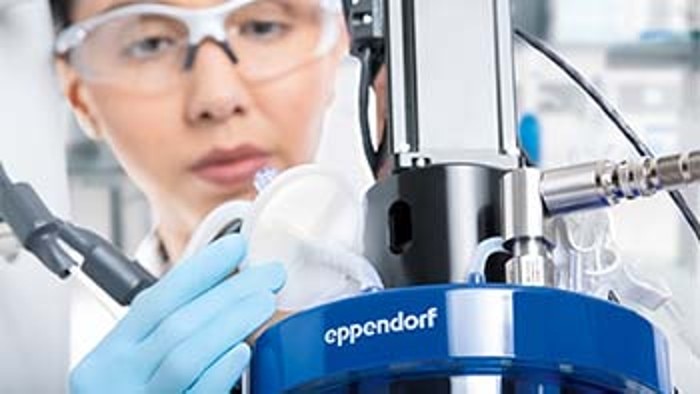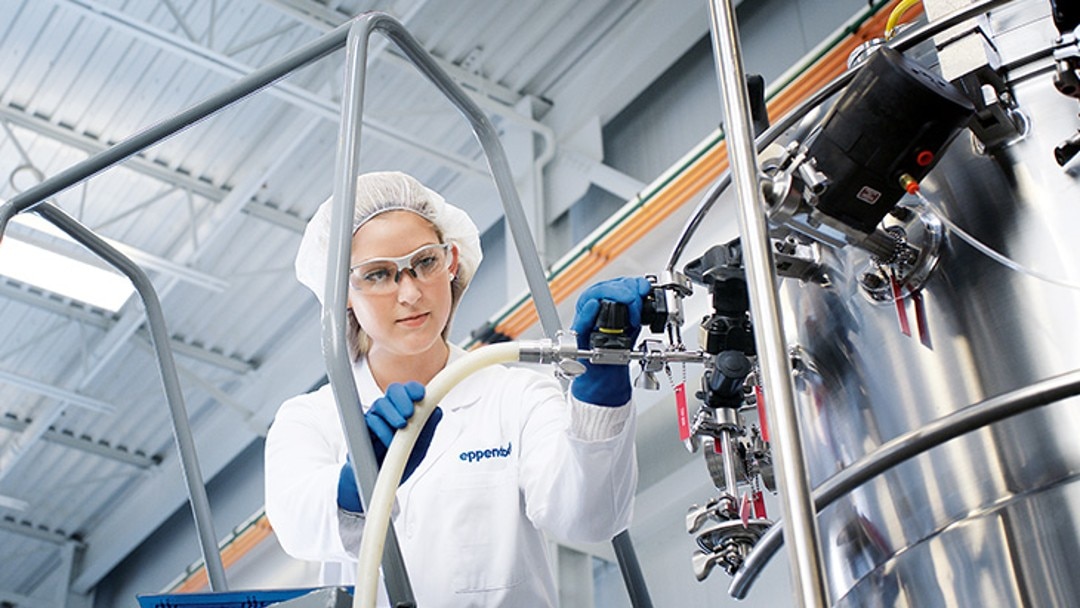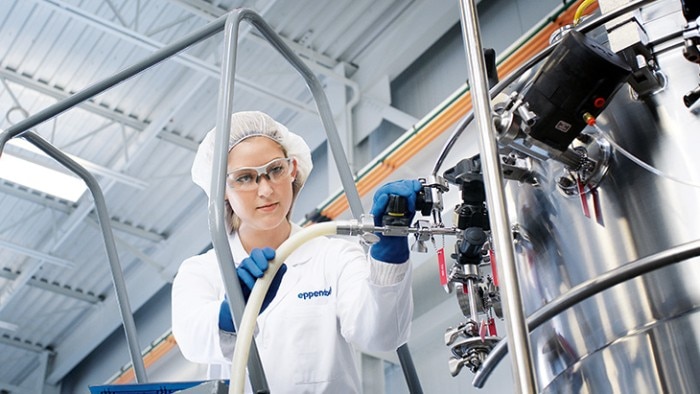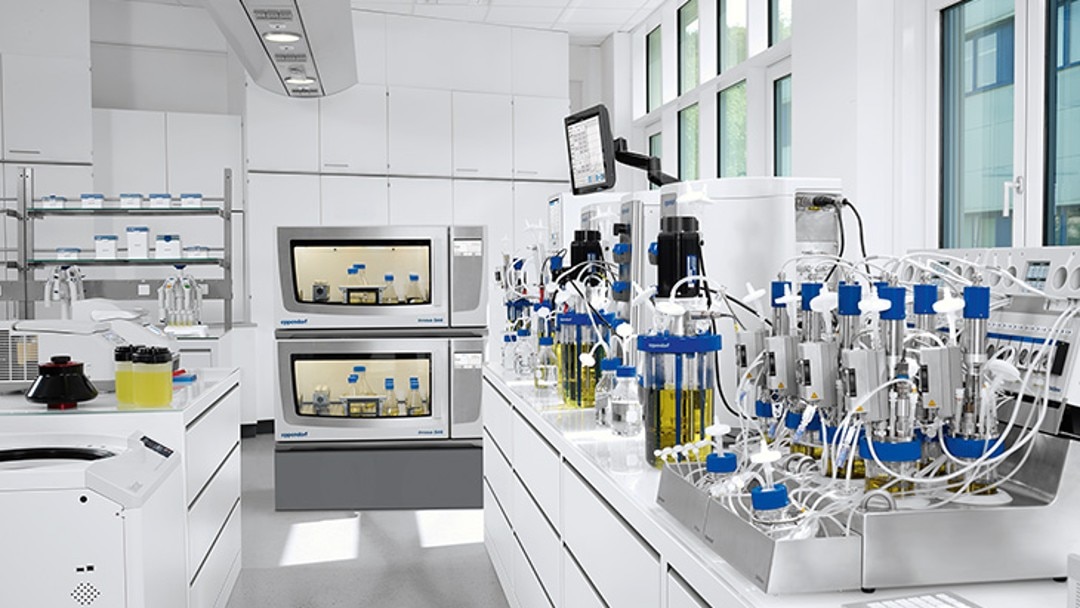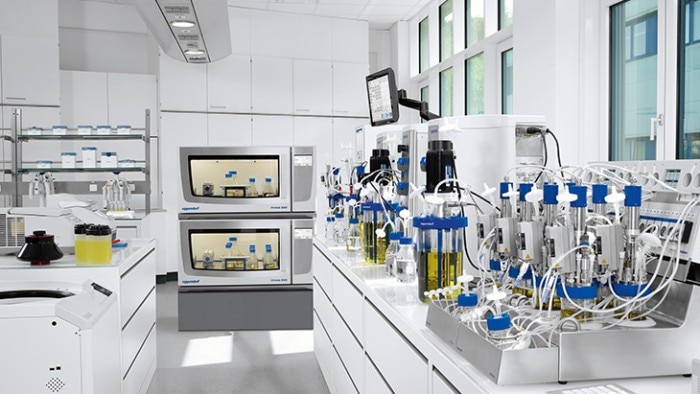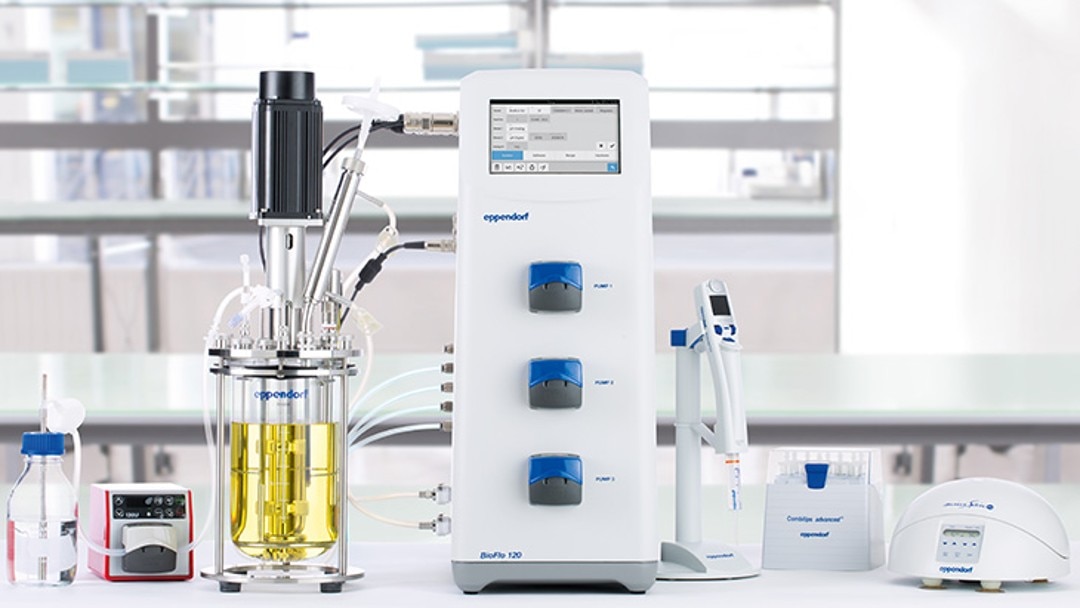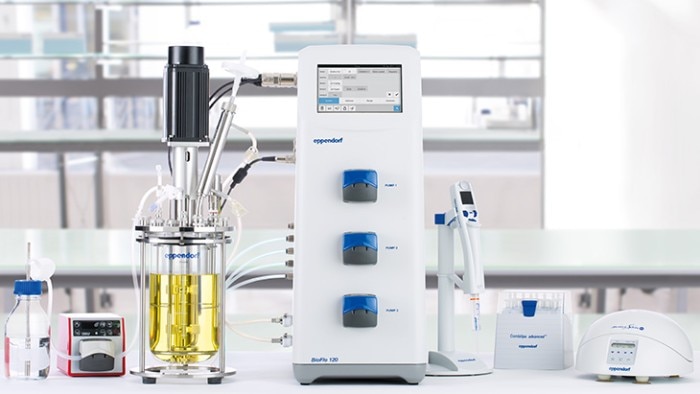-
- Benchtop Centrifuges
- Floor-Standing Centrifuges
- Refrigerated Centrifuges
- Microcentrifuges
- Multipurpose Centrifuges
- High-Speed Centrifuges
- Ultracentrifuges
- Concentrator
- High-Speed and Ultracentrifugation Consumables
- Accessories
- Tubes
- Plates
- Device Management Software
- Sample and Information Management
Regarding suitability of Eppendorf bioprocess equipment in GMP-regulated applications, please reach out to your Eppendorf sales representative.
Bacterial Fermentation
Protein expression
Plasmid production
Food & nutrition
Other products
What is bacterial fermentation?
Read more
Read less
What properties make a bioreactor system suitable for microbial production?
Read more
Read less
Protein expression in E. coli
Read more
Read less
E. coli fermentation: Basic information
Read more
Read less
The Auto Culture Mode reduces the complexity of bioprocess design
Read more
Read less
BioBLU® f Single-Use Bioreactors – For more efficient process development
Better than glass: By minimizing setup times, eliminating cleaning procedures and reducing labor time and costs, single-use bioreactors can simplify fermentation. BioBLU® f Single-Use Bioreactors achieve the mass transfer and heat removal requirements of fermentation processes by
- Proven stirred-tank design
- Powerful overhead drives featuring Rushton-type impellers
- Smart solutions for cooling
The BioBLU® f portfolio covers working volumes from 65 mL to 3.75 L.
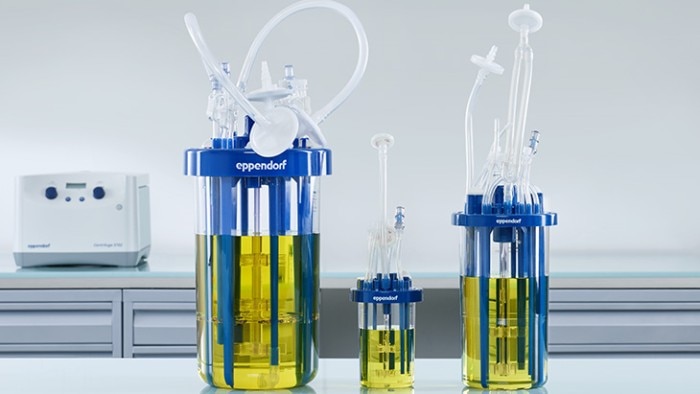
Plasmid production in bacteria
Read more
Read less
Fermentation scale-up
Read more
Read less
Eppendorf bioreactor systems for fermentation scale-up
Fermentation scale-up from 1 L to 100 L
Read more
Read less
- Small-scale: DASbox® Mini Bioreactor System and DASGIP® Parallel Bioreactor Systems
- Bench-scale: SciVario® twin , BioFlo® 120 , BioFlo® 320
- Pilot/production-scale: BioFlo® 510/CelliGen 510 , BioFlo® 610 , BioFlo® Pro
Read more
Read less
Read more
Read less
Read more
Read less
Food, nutrition, and human health
Read more
Read less
Other fermentation products and frequently used bacteria
Corynebacterium glutamicum
- Application Note: Learn how Eppendorf DASGIP® Parallel Bioreactor System was used to produce chemicals from engineered C. glutamicum strains
- Application Note: Learn how a flexible design of both hardware and software was used for scale-down model development
Read more
Read less
Streptococcus sp.
- Application Note: How to set up a microbial hyaluronic acid production process
Read more
Read less
Clostridium sp.
- Application Note: Monitor the redox potential of anaerobic fermentation of C. beijerinckii using the BioFlo® 120 control station
- Application Note: How to scale-up your anaerobic fermentation from 250 mL to 1 L using BioBLU® f Single-Use Vessels
Read more
Read less
Lactobacillus sp.
- Application Note: Learn how a parallel bioreactor system was used for optimizing Lactobacillus sp. fermentation
- Application Note: Learn how you could mimic the natural physiology of the human gut for microbiome and probiotic study and production.
Read more
Read less
Bacillus sp.
- Application Note: Scale-up of polyhydroxbutyrate production from lignocellulosic hydrolysates by Bacillus sacchari fermentation
Read more
Read less

